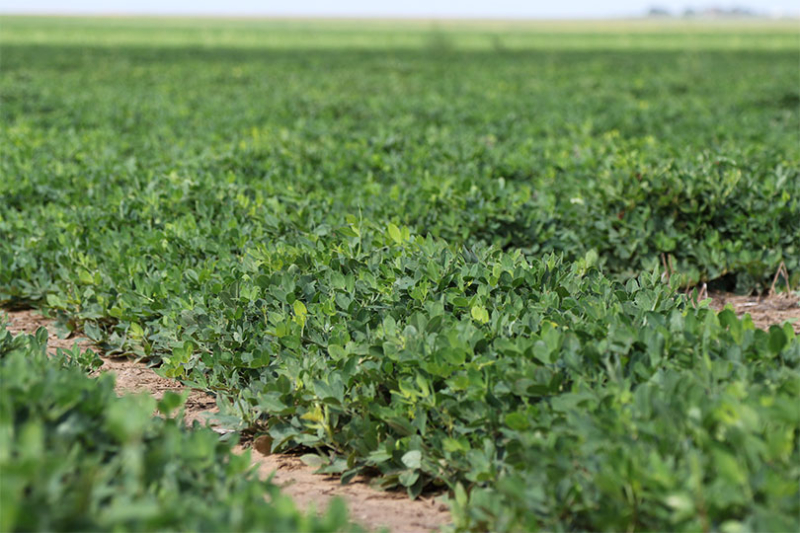By Emmy Powell
Communications Specialist
Texas A&M AgriLife Research received a grant to establish a new opportunity to support U.S. peanut farmers.
The U.S. Department of Agriculture awarded AgriLife Research a three-year, $499,000 grant to lead the development of high-oil peanut cultivars and explore the economics of establishing the high-oil peanut market.
“We will be working with both growers and industry partners on developing economic models for the establishment of a totally new industry,” said John Cason, peanut breeder for Texas A&M AgriLife Research and Extension. “They will help us identify the differences in the value of edible versus oil peanuts and find key choke points that must be addressed to create the new value chain.”
The project will focus on creating high-oil peanut varieties, assessing the economic viability, and working to expand the peanut oil market.
Current peanut markets focused on crushing for oil, meal and other coproducts should begin with a blank slate to determine what cost reductions are achievable, Cason said.
“We know the value of traditional edible peanuts is substantially higher than the value of peanuts used strictly for crushing right now, but with higher oil content, that value could be significantly increased,” he said.
The AgriLife Research team previously collaborated with Chevron Technical Center to investigate the use of peanut oil as a source for lower-carbon-intensity fuel.
“Investigations into both of these potential markets reflect the agricultural sector’s need to diversify and innovate in response to shrinking profits and increasing environmental concerns,” Cason said. “Peanut oil presents a promising opportunity both as a differentiated cooking oil and a renewable energy source.”
The grant will use the data collected from previous research to develop peanuts that have greater oil content and are better adapted to dryer climates, which will create a more resilient agricultural system, Director of AgriLife Research G. Cliff Lamb, said.
“This project takes the entire agricultural value chain into account, using leading-edge research and innovation to create an abundant, affordable and high-quality product that protects natural resources, improves our production systems and supports economies in Texas and beyond,” Lamb said.
The research team is field-testing normal and high-oleic-content breeding lines that vary from 55%-57% oil content. Cason noted they have tested several irrigated and rainfed breeds for four years, and commercial cultivars show potential, with up to 62% oil content, compared to 48% in conventional cultivars.
“Our intention is to continue developing these lines with a focus on low-input sustainable production practices,” Cason said.
With a new peanut oil market developed, he noted there will be a need for new cultivars that have higher total oil content, as well as a rigorous economic analysis, to ensure a viable market in the future.
The research team will create and conduct a survey to gain understanding of consumer’s willingness to use peanut oil. The team also will create models and budgets for peanut-based cooking oil and renewable energy production in Texas and across the U.S.
“We’ve already identified promising genetic markers that will help us select for peanuts with high-oil content and pest resistance,” Cason said.


Leave A Comment